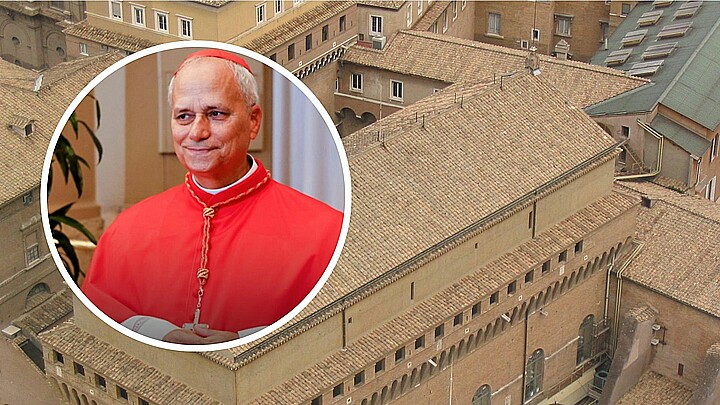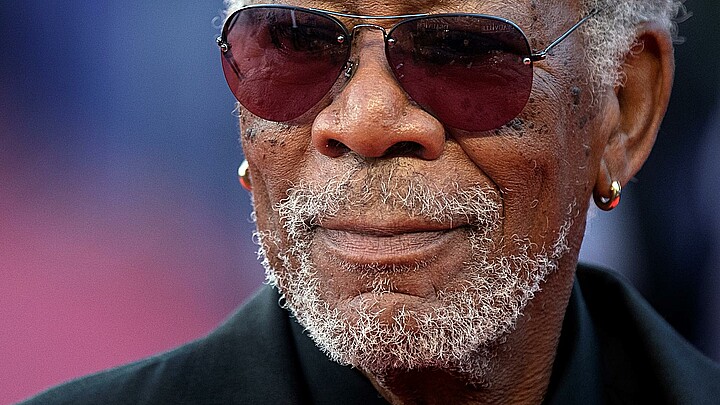Culture
National Hispanic Heritage Month and President Reagan's message of liberty
The 40th president and former California governor signed a proclamation in 1987 enacting National Hispanic Heritage Month, honoring the role Hispanics have played throughout American history in safeguarding its republican values

September 15, 2023 7:06am
Updated: September 15, 2023 9:18am
It’s official! Today (Sept. 15) marks the first official day of Hispanic Heritage Month, a holiday that traces its roots back to two presidential administrations, one Democratic and one Republican.
This year's Hispanic Heritage Month is based on the theme of, “Latinos: Driving Prosperity, Power, and Progress in America.”
The original holiday began in 1968 as a weekly holiday after Lyndon Johnson signed a bill into law that authorized the president to designate the week of Sept. 15 as National Hispanic Heritage Week as a result of Latino involvement in the civil rights movement.
Sept. 15 was chosen because several Latin American countries celebrate their national independence on or around that date including Costa Rica, El Salvador, Guatemala, Honduras, and Nicaragua. All of those Latin American nations declared their independence from Spain on Sept. 15, 1821 and Mexico celebrates its independence on Sept. 16 followed by Chile on Sept. 18.
Nearly two decades after Democratic President Johnson designate the week of Sept. 15 as National Hispanic Heritage Week, Republican President Ronald Reagan transformed the commemoration from a week to a month on Sept. 11, 1987.
“America's Hispanic heritage is an indelible and invaluable part of our history and a vital part of the creative forces that are shaping our future,” Reagan wrote in Proclamation 5701.
He based his decision by explaining that, “During National Hispanic Heritage Week, all Americans can recognize, honor and celebrate the rich and diverse contributions Hispanic Americans have made to our land ever since the exploration and settlement of the Western Hemisphere.”
As of July 1, 2022, the U.S. Census Bureau reported the Hispanic American population at 63.7 million people, meaning that Hispanics are the largest racial or ethnic minority group in the U.S. at approximately 19% of the U.S. population.
But the Hispanic emigration to the Americas began on Oct. 12, 1492 when explorer Christopher Columbus arrived, part of an expedition supported by Spain. The Spanish Empire sought to reach the new world as a way to promote Christianity and find more wealth. The Spanish hoped to find more gold and silver in the New World. It also engaged in the slave trade.
While the Spanish found wealth in the New World, it also caused economic strain since by the late 1700s and early 1800s, it was spending money to maintain power of the Americas, which were also being explored by other European powers.
They also faced troubles back home as Napoleon moved his forces toward the Iberian Peninsula and ideas of equality and liberty filtered into Spanish culture from the French Revolution.
While Spain struggled to maintain power back home, it implemented Spanish Civil Code throughout the New world, enforced by viceroys that governed different areas, which later evolved into the Latin American countries we see today.
Hispanic explorers helped open the New World, discover its resources, and found its new nations, including parts of our own,” President Reagan’s proclamation reads.
“Explorers such as Coronado in the 16th century traveled throughout the present-day United States, and Spaniards settled in St. Augustine, Florida, long before Jamestown was founded.
"The founding of missions and presidios in California was simultaneous with the American Revolution; and when the new United States had won, thanks in part to Spanish help, Te Deum masses of Thanksgiving were celebrated in those missions, just as throughout all Spanish colonies.”
The term “Hispanic’ points namely to those whose heritage comes from Spanish-speaking countries in Latin America or Spain.
Many people do not realizing there is a difference between the term Hispanic and Latino.
“Latino” can include not only Hispanic people but people from any country in Latin America regardless of their language, including Brazilians, where the dominant language is Portuguese.
Still, the holiday is meant to include anyone and everyone with either Hispanic or Latino roots.
“People of Hispanic culture have been present in the Americas from early times and have exerted much influence on the development of the United States,” President Reagan’s proclamation reads.
The Spanish names bestowed on so many of our cities, towns, States, rivers, mountains, and lakes -- Los Angeles, Sacramento, Guadalupe, Colorado, Sierra Nevada, for instance -- remind us daily that the values of Hispanic Americans, such as devotion to church, family, work, and community, helped settle our frontiers and build our future.”
The 40th president and former California governor also paid tribute to the role Hispanics have played throughout American history in safeguarding its republican values.
“Hispanic Americans have served and sacrificed time and again in the Armed Forces to keep our Nation free. Hispanic cultural heritage is a constant source of enrichment for our country, and Hispanic Americans are a source of close ties to the nations of Central and South America,” the proclamation reads.
That tribute included Reagan honoring those Hispanics who were part of the early struggles to help Latin American nations declare independence from European empires, just as the American Continentals fought the Revolutionary War against Great Britain after it declared independence on July 4, 1776.
“In the 19th century, the vision of liberty inspired countless brave Latin Americans to fight for independence for their countries,” Reagan wrote. “Today, Hispanics carry on the dream of freedom throughout the hemisphere, and democracy is enjoying a broad resurgence.










